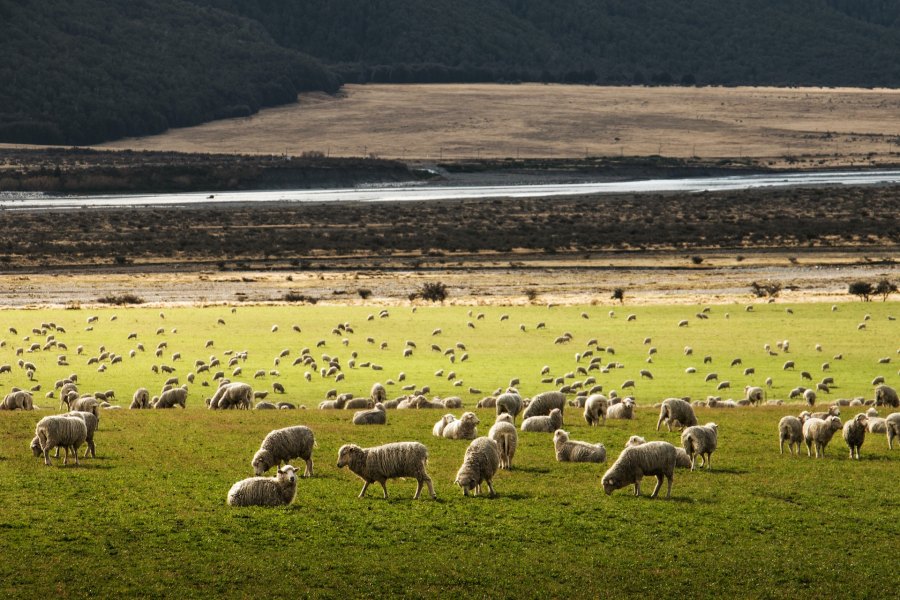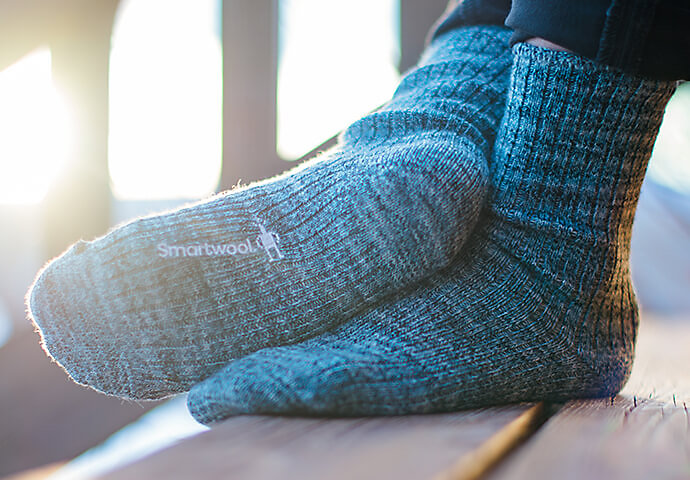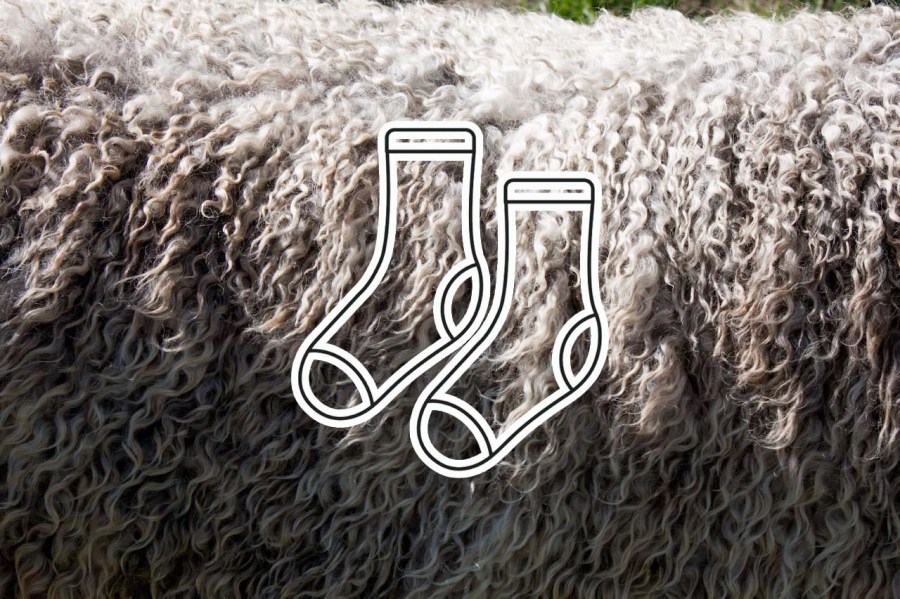Merino wool, which derives from Merino sheep, is renowned for its luxuriously soft and fine fibers. Distinct from regular wool and synthetic materials, it possesses unique properties that make it very handy for hikers.
I’ve taken on some big backpacking trips over the last 10 or so years, including a 1000-mile hike around Wales and multi-week trails through Spain, Italy and Scotland. On nearly all of those trips I’ve worn Merino hiking socks – or at least socks with a high Merino content – and I will continue to do so on future adventures. Why? Because it ticks all the right boxes for me.
What is Merino?
Before I get into the reasons why I like Merino and why I think it’s the best material for hiking socks, it’s worth just highlighting the story behind the wool. Originating in Spain’s Merino region, the breed was selectively refined by the Moors in the 8th century, and strict laws protected it in Spain from export.

Over time, Merino sheep spread worldwide, adapting to different climates in places like Australia and South America. Its demand surged during the industrial revolution due to its exceptional quality, making it a prized material for clothing and accessories. Merino wool’s popularity in outdoor and hiking gear grew significantly in the late 20th and early 21st centuries as outdoor enthusiasts began recognizing its exceptional properties.
The benefits of Merino wool hiking socks
Comfort and Cushioning
Aside from a time where I was running in rubbish trail shoes (I’ll save that story for another day), I’ve never really been afflicted with foot blisters before. That, I think, could largely be down to the fact I’m usually wearing socks with a high Merino content.
Merino is known to offer exceptional comfort and cushioning. The fine fibers of Merino wool feel soft against the skin, minimizing chafing and blister risks. Additionally, the natural elasticity of Merino wool means that the socks tend to conform to your foot shape, ensuring a snug, supportive fit.
You know that ‘new sock feeling’? From my experience, with Merino socks, you tend to get that feeling again and again after the first wear.
Moisture Management
Moisture management is vital for hiking socks. Merino wool’s moisture-wicking properties draw sweat away from the skin, keeping feet dry and reducing the risk of blisters and even fungal infections. This contrasts with materials like cotton which retain moisture and lead to discomfort during extended hikes.
Temperature Regulation
Merino socks are great for temperature regulation, keeping your feet comfortable in varying weather conditions. That means that in Merino socks your feet shouldn’t get too sweaty in warm conditions and they’ll be nice and warm in cold conditions.
Odor Resistance
A significant advantage of Merino wool socks is their ability to resist odor-causing bacteria. The wool’s natural antimicrobial properties prevent the buildup of unpleasant odors, even after prolonged use, making it ideal for multi-day hikes or backpacking trips. Socks with a high synthetic content are known for getting very smelly after a short amount of time.
Durability and Longevity
Merino socks also tend to have good durability and longevity too. The fine, resilient fibers withstand frequent use and washing without losing their shape or softness, outlasting cheaper alternatives. I’ve got pairs of Merino wool socks that I’ve owned for over five years and hiked hundreds of miles in – and that are still usable.
Environmental Considerations
For environmentally-conscious hikers, the sustainability factor of Merino wool is essential to consider. That’s so long as the Merino is responsibly sourced. While some synthetics – particularly those that are recycled and recyclable – might have a lower carbon footprint, synthetic materials or conventionally produced cotton tend to be regarded as more environmentally harmful than Merino. It’s worth checking a wool product for industry labels including bluesign approval and/or the Responsible Wool Standard. Many suppliers will also state where their wool can be traced back to.

If you’re conscious of the ethical impact of a product you’re considering you might want to investigate the brand’s policies on mulesing. This is a controversial and painful practice in the sheep industry that involves cutting strips of skin from a lamb’s buttocks to prevent flystrike, causing distress and suffering to the animals. Fortunately many brands are opting against using this method now.
Merino… it’s not for everyone
So one problem with Merino is one I’ve kind of already touched upon and that is the fact that it’s not suitable for vegans. Another problem with Merino is that it doesn’t come cheap with most pairs with a high content retailing at around about the $20 (£17) mark.
Then there’s also the fact that, for some people, Merino isn’t actually a very comfortable material. That could be due to the fact the Merino contains lanolin, a natural oil found in sheep’s wool that some people can be allergic to. One of the most common signs of a lanolin allergy is skin irritation or a rash. You may experience redness, itching, and inflammation on areas of your skin that come into contact with lanolin-containing products. Some people with a lanolin allergy may also experience allergic rhinitis symptoms, such as a runny or stuffy nose, sneezing, and nasal congestion.
Fortunately, Merino wool contains a low amount of lanolin compared to standard wool, but it can still cause an allergic reaction for some people, depending on the extent of their allergy.
Verdict: are Merino wool hiking socks worth the money?
If you don’t tend to have any issues from wearing wool then I would personally say Merino wool hiking socks are worth the money. As I’ve explained, they’re comfortable and practical and perhaps best of all they’re long-lasting, so while the initial purchase might hit your pocket quite hard, over time you should get your money’s worth from the. And you know that saying ‘buy cheap – buy twice’? That definitely applies to socks.







